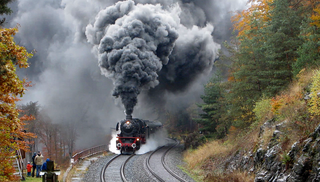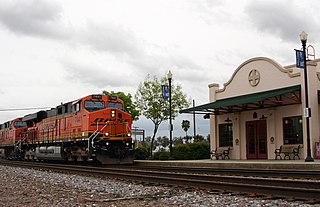This article includes a list of references, related reading or external links, but its sources remain unclear because it lacks inline citations .(January 2017) (Learn how and when to remove this template message) |
| Locale | Corcoran, Kings County, California |
|---|---|
| Dates of operation | 1910–1934 |
| Track gauge | 4 ft 8 1⁄2 in (1,435 mm) standard gauge |
| Headquarters | Hanford, California |
The Kings Lake Shore Railroad was a 19.4-mile (31.2 km) common carrier railroad that operated in Kings County, California from 1910-1934. The line primarily hauled agricultural products that grew in this region of the San Joaquin Valley. The line originated with a connection with the Atchison, Topeka and Santa Fe Railway at Corcoran and then ran south-southwest to its terminus at Liberty Farms.
A common carrier in common law countries is a person or company that transports goods or people for any person or company and that is responsible for any possible loss of the goods during transport. A common carrier offers its services to the general public under license or authority provided by a regulatory body. The regulatory body has usually been granted "ministerial authority" by the legislation that created it. The regulatory body may create, interpret, and enforce its regulations upon the common carrier with independence and finality, as long as it acts within the bounds of the enabling legislation.

Kings County is a county in the U.S. state of California. The population was 152,982 at the 2010 census. The California Department of Finance estimated the county's population was 151,662 as of January 1, 2018. The county seat is Hanford.

The San Joaquin Valley is the area of the Central Valley of the U.S. state of California that lies south of the Sacramento–San Joaquin River Delta and is drained by the San Joaquin River. It comprises seven counties of Northern and one of Southern California, including, in the north, all of San Joaquin and Kings counties, most of Stanislaus, Merced, and Fresno counties, and parts of Madera and Tulare counties, along with a majority of Kern County, in Southern California. Although a majority of the valley is rural, it does contain cities such as Fresno, Bakersfield, Stockton, Modesto, Turlock, Tulare, Porterville, Visalia, Merced, and Hanford.
Grading for the railroad commenced in 1910 as the Kings River Railroad. The Kings River Railroad was organized to build from the Santa Fe at Corcoran to Tulare Lake. The Kings River constructed 10.05 miles (16.2 km) of track.

Tulare Lake, Laguna de Tache in Spanish, is a freshwater dry lake with residual wetlands and marshes in the southern San Joaquin Valley, California, United States. After Lake Cahuilla disappeared in the 17th century, Tulare Lake was the largest freshwater lake west of the Mississippi River and the second-largest freshwater lake entirely in the United States, based upon surface area. A remnant of Pleistocene-era Lake Corcoran, Tulare Lake dried up after its tributary rivers were diverted for agricultural irrigation and municipal water uses.
In May 1917, the Kings Lake Shore Railroad was incorporated and took over the Kings River Railroad. The railroad extended the line another 9.4 miles (15.1 km). In 1923, the railroad acquired Santa Fe Railway's #27, a 4-4-0 American-type Schenectady Locomotive Works (Builder No. 2373) steam locomotive. Abandonment of the line was authorized during the Great Depression on January 22, 1934, and the tracks were removed the same year.

4-4-0 is a locomotive type with a classification that uses the Whyte notation for the classification of steam locomotives by wheel arrangement and represents the arrangement: four leading wheels on two axles, four powered and coupled driving wheels on two axles, and a lack of trailing wheels. Due to the large number of the type that were produced and used in the United States, the 4-4-0 is most commonly known as the American type, but the type subsequently also became popular in the United Kingdom, where large numbers were produced.

The Schenectady Locomotive Works built railroad locomotives from its founding in 1848 through its merger into American Locomotive Company (Alco) in 1901.

A steam locomotive is a type of railway locomotive that produces its pulling power through a steam engine. These locomotives are fueled by burning combustible material – usually coal, wood, or oil – to produce steam in a boiler. The steam moves reciprocating pistons which are mechanically connected to the locomotive's main wheels (drivers). Both fuel and water supplies are carried with the locomotive, either on the locomotive itself or in wagons (tenders) pulled behind.














